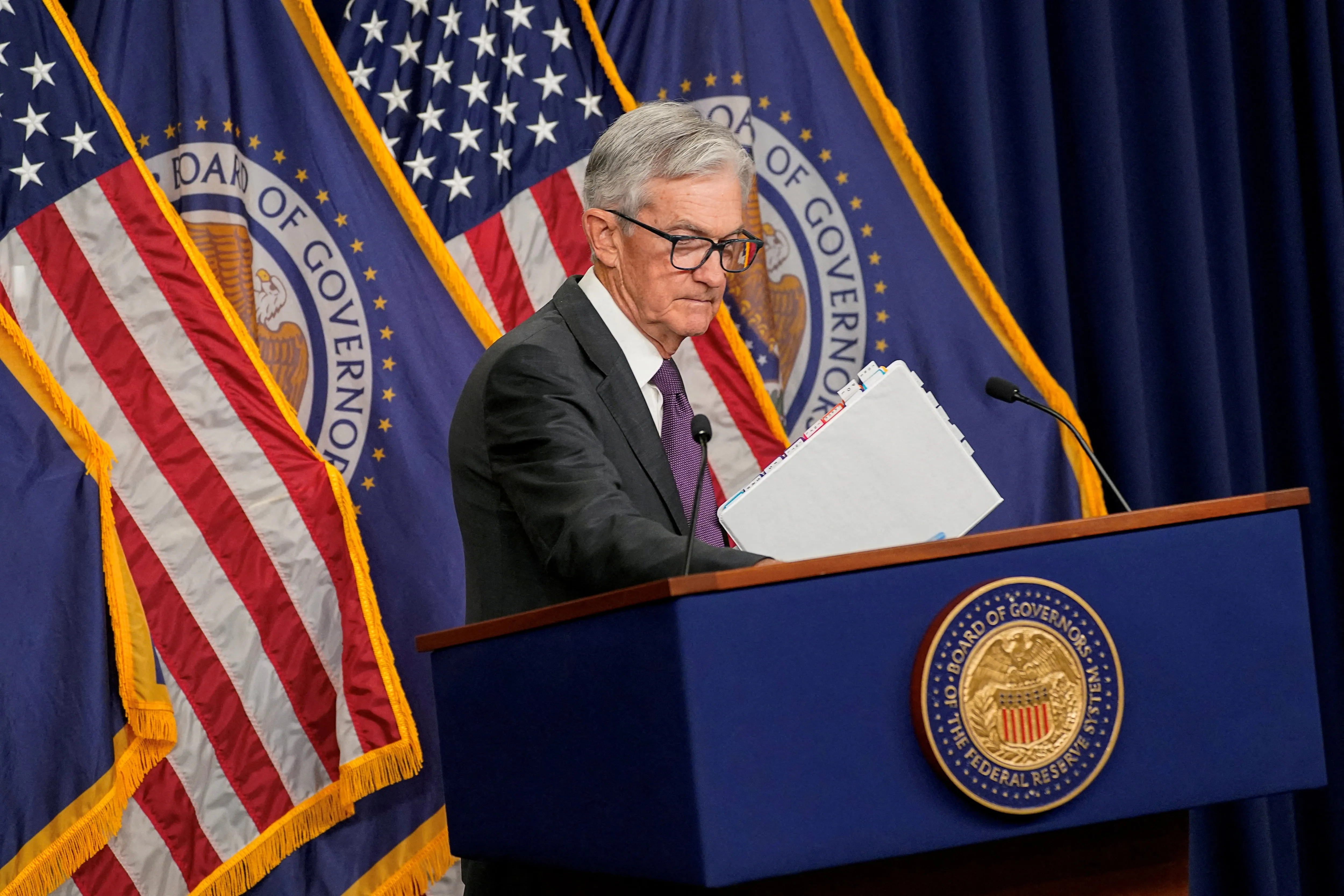The Fed Chief Faces Mounting Pressure as the Economy and Jobs Data Are Released
Federal Reserve Chair Jerome Powell and fellow policymakers are set to gather this week for a critical interest rate meeting amid a backdrop of mounting political pressure, shifting trade dynamics, and mixed economic signals. The meeting, which begins Tuesday and concludes Wednesday, coincides with the release of several key U.S. economic reports—on GDP, employment, and inflation—adding complexity to the Fed’s decision-making process.
Most analysts expect the Fed to leave interest rates unchanged, as it has in previous meetings. This expectation comes as fresh data is predicted to reveal that the U.S. economy rebounded in the second quarter, mainly due to a shrinking trade deficit.
However, the recovery is not without caveats: consumer demand and business investment appear to have remained soft, with economists projecting GDP to rise at an annualized pace of 2.4%, following a 0.5% contraction in the first quarter.
Consumer spending, which fuels much of the economy, is anticipated to have risen just 1.5%, according to a Bloomberg survey—marking one of the weakest two-quarter stretches since the pandemic’s early days in 2020. The housing sector has also been a drag on growth, weighed down by high mortgage rates and elevated prices.
Later in the week, the July jobs report is expected to show a slowdown in hiring. Payroll gains likely eased after a June boost linked to seasonal hiring in education. The unemployment rate is expected to tick up to 4.2%, and private-sector jobs are forecast to have increased by only 100,000—the smallest gain in eight months. Job openings, based on separate data due Tuesday, are also expected to decline.
Some Fed officials have voiced concern over signs of weakness in the labor market, with a couple even suggesting it may be time to consider rate cuts. Outside the Fed, President Donald Trump has been particularly vocal, urging Powell and his colleagues to lower borrowing costs. Trump has criticized Powell’s leadership not just for rate policy but also for construction overruns tied to renovations at the Fed’s headquarters.
While the Fed has maintained a cautious stance—partly due to inflation risks associated with Trump’s tariffs—price increases have so far remained relatively modest. Still, inflation data due Friday may show that the Fed’s preferred core inflation measure crept up in June, indicating some of the tariffs’ effects are reaching consumers.
Meanwhile, the Bank of Canada is also expected to keep its benchmark interest rate steady at 2.75% amid uncertainty surrounding trade policy and inflation. Although Canada’s economy has weathered tariffs better than anticipated, GDP data is expected to show a slight contraction in the second quarter. Prime Minister Mark Carney is attempting to strike a trade agreement with Trump before August 1, though expectations for a deal remain low.
Globally, trade remains a focal point, especially as Trump’s deadline for new trade agreements looms. The European Union, South Korea, and Switzerland are among the nations racing to finalize deals. European Commission President Ursula von der Leyen will travel to Scotland to meet Trump in hopes of securing a pact, though EU officials acknowledge that any deal ultimately hinges on Trump’s decision.
Other central banks around the world are mostly holding rates steady. The Bank of Japan is expected to keep its rate unchanged at 0.5% when it meets Thursday, with attention turning to Governor Kazuo Ueda’s response to recent trade developments.
Across Asia, economic reports will shed light on how countries like South Korea, Indonesia, and Thailand are faring amid tariff uncertainty. China will release manufacturing data to gauge the health of its economy, while Australia’s inflation data could open the door for the Reserve Bank to resume rate cuts.
In Europe, GDP and inflation data are also in focus. The euro-area economy is expected to show zero growth for the second quarter, down from 0.6% in the first. Germany may post a slight contraction, while Spain is forecast to grow modestly. Inflation in the region likely cooled to 1.9% in July, supporting the European Central Bank’s view that inflation is under control.
Elsewhere in Africa, several central banks are expected to adjust rates. Ghana may lower its key rate by 250 basis points, while South Africa is forecast to deliver another rate cut. Malawi and Mozambique may also move to ease policy, especially the latter, which is facing a technical recession.
In Latin America, Chile’s central bank is anticipated to cut rates for the first time in 2025. Cooling inflation has given the bank room to begin easing policy, with a quarter-point cut expected. Mexico’s GDP data should show modest growth, though Trump’s trade stance continues to weigh on its outlook. Brazil’s central bank is likely to pause after a lengthy tightening cycle, while Colombia could approve a rate cut despite inflation staying above the target range.
Peru will release its consumer price report at the end of the week, with expectations that inflation remained stable, close to June’s 1.69% annual reading.
All told, central banks across the globe are navigating a tricky mix of political and economic challenges, balancing inflation concerns, trade uncertainties, and fragile labor markets as they chart their next moves.

Subscribe to our newsletter!
As a leading independent research provider, TradeAlgo keeps you connected from anywhere.








